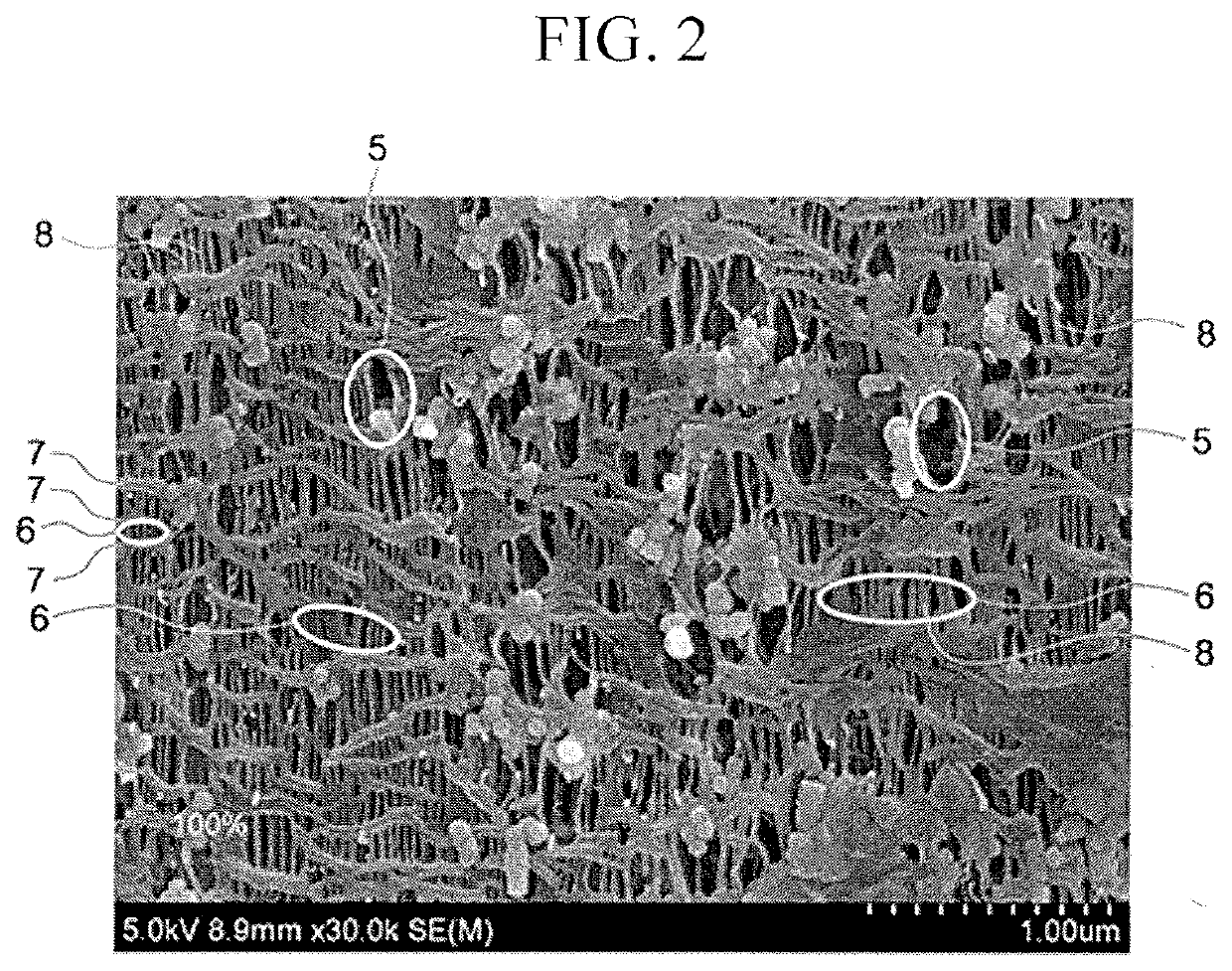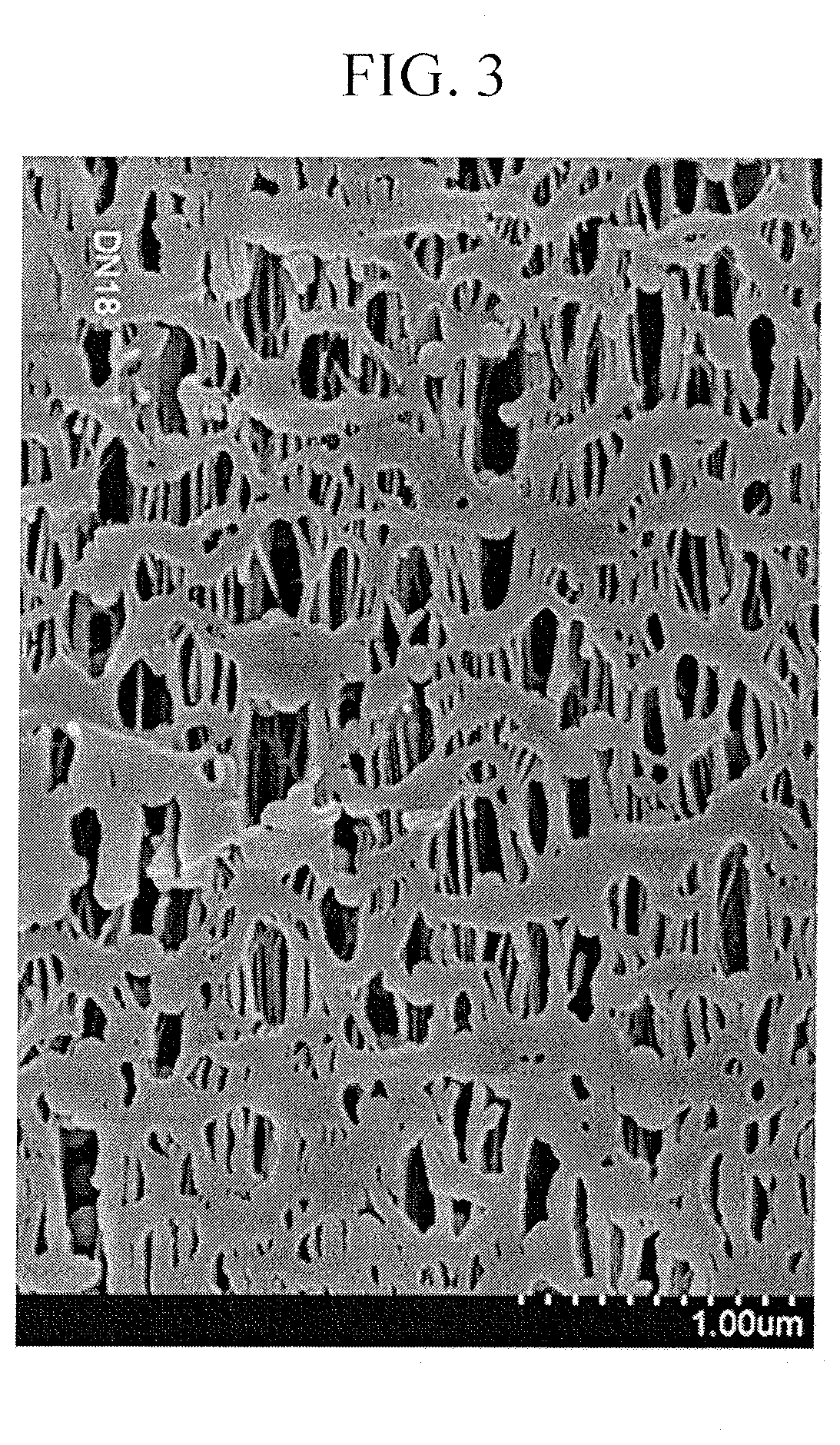Porous film, separator comprising same, and electrochemical cell
a technology of porous film and separator, which is applied in the direction of cell components, cell component details, electrochemical generators, etc., can solve the problems of low drawing rate and deterioration of tensile strength in a horizontal direction, plasticizer is harmful to human body and the environment, and poor processability and economics, etc., to achieve good tensile strength, good tensile strength, and good tensile strength. , the effect of good tensil
- Summary
- Abstract
- Description
- Claims
- Application Information
AI Technical Summary
Benefits of technology
Problems solved by technology
Method used
Image
Examples
example 1
[0094]First polyethylene (Prime Polymer, MI 0.3, density 0.96 g / cm3, Tm 136° C.) and second polyethylene (MI 0.9, density 0.954 g / cm3, Tm 130° C., Lotte Chemical Corp.) were mixed in 1:1 part by weight to prepare 100 parts by volume of polyethylene and then, mixed with 15 parts by volume of calcium carbonate particles having an average particle size of 60 nm and surface-treated with fatty acid (Okyumhwa RA, DongHo Calcium Corp.) to prepare a composition. The composition was formed into a 30 μm-thick precursor film under an extrusion condition at 190° C. to 250° C. at a draw ratio of 40 to 45, and the precursor film was annealed at 120° C. for 2 minutes and treated though once 100% first drawing (low temperature drawing) at 25° C. in a MD direction and then, 100% second drawing (high temperature drawing) at 120° C. in the MD direction to obtain a 20 μm to 25 μm-thick porous film. FIG. 2 shows a SEM image of the surface of the porous film, and FIG. 3 shows a SEM image of the cross-sec...
PUM
| Property | Measurement | Unit |
|---|---|---|
| density | aaaaa | aaaaa |
| length | aaaaa | aaaaa |
| length | aaaaa | aaaaa |
Abstract
Description
Claims
Application Information
 Login to View More
Login to View More - R&D
- Intellectual Property
- Life Sciences
- Materials
- Tech Scout
- Unparalleled Data Quality
- Higher Quality Content
- 60% Fewer Hallucinations
Browse by: Latest US Patents, China's latest patents, Technical Efficacy Thesaurus, Application Domain, Technology Topic, Popular Technical Reports.
© 2025 PatSnap. All rights reserved.Legal|Privacy policy|Modern Slavery Act Transparency Statement|Sitemap|About US| Contact US: help@patsnap.com



